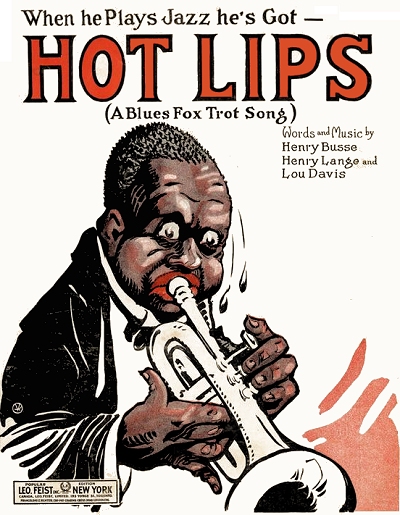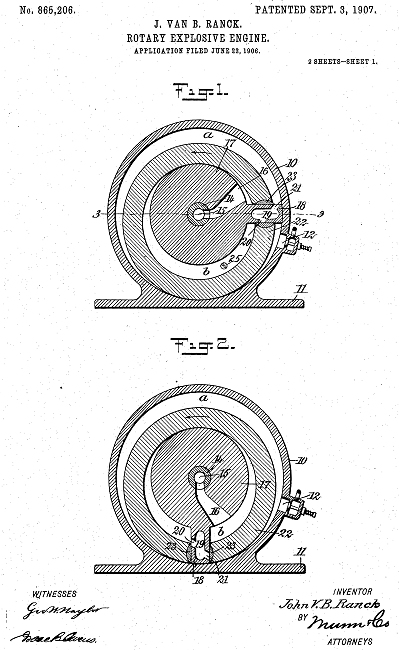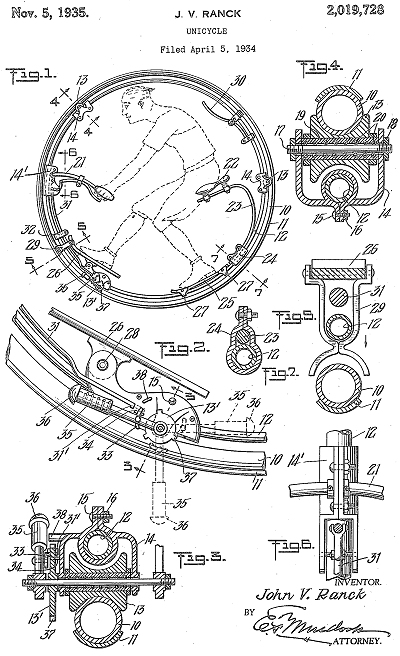
|
John Van Buren Ranck (November 15, 1875 to November, 1965) | |
 Selected Covers (Hover to View) Selected Covers (Hover to View) | |
Known cryptically to sheet music collectors simply as JVR, John Van Buren Ranck was born in 1875 not far from one of the eventual sheet music publication centers, Williamsport, Pennsylvania. Whether his collective middle names were an homage to the eighth president of the United States, Martin Van Buren, or another family member, is unclear. He was the second of two known boys born to Pennsylvania natives Leonard Ranck and Emma Minnich, the older one being Thomas Franklin "Frank" (9/19/1872). They were followed by three girls, Olive Nina (11/6/1884), Mable (3/1887), and Lulu (4/1890). Both the 1880 enumeration, taken in New Columbia, Union, Pennsylvania, and the 1900 record taken in Wiliamsport, where the family had moved in 2188w, showed Leonard to be a stone mason, so an artist of sorts, given his duties were to cut and shape rocks for specific purposes.
Beyond the family listings, and, of course, his artwork, there is very little available about John on a personal level. In 1895 he was listed in the Williamsport city directory as a clerk.

 Later in the year he lived for a brief time in Columbus, Ohio, where he was shown as a draftsman, very possibly working as an apprentice learning the trade. He also briefly worked as a cartoonist for The Philadelphia Press newspaper that year. In 1896 John was married to high school classmate May N, Young in Williamsport. Their daughter Dorothy Cavendish was born in November of 1898 according to the 1900 enumeration, but later records showed it to be 1897, and may be in error. By that time the couple had relocated to Philadelphia, where the 1900 enumeration showed him to be a plasterer, perhaps doing work similar to that of his father's but with a more malleable medium.
Later in the year he lived for a brief time in Columbus, Ohio, where he was shown as a draftsman, very possibly working as an apprentice learning the trade. He also briefly worked as a cartoonist for The Philadelphia Press newspaper that year. In 1896 John was married to high school classmate May N, Young in Williamsport. Their daughter Dorothy Cavendish was born in November of 1898 according to the 1900 enumeration, but later records showed it to be 1897, and may be in error. By that time the couple had relocated to Philadelphia, where the 1900 enumeration showed him to be a plasterer, perhaps doing work similar to that of his father's but with a more malleable medium. Still, he was on his way to being an illustrator in the short run, displaying other innate skills as well.
Still, he was on his way to being an illustrator in the short run, displaying other innate skills as well.


 Still, he was on his way to being an illustrator in the short run, displaying other innate skills as well.
Still, he was on his way to being an illustrator in the short run, displaying other innate skills as well.It is unclear where John and May were the next few years, but he surfaced in 1906 in Cleveland, Ohio, working as an artist, most likely in advertising, and possibly creating sheet music art for one or more local publishers. He clearly had some interests on the side, including auto mechanics. A 1907 U.S. Patent Office listing, #322,856, showed that Ranck had created a prototype and the basic paradigm for the internal combustion rotary engine which many decades later would be fully realized in the Wankel engine used by Mazda Motors. This was no small engineering feat, and it was followed by many other renditions by other inventors, of which most referred back to the original Ranck patent.
The Rancks remained in Cleveland through mid-1909, then relocated to Brooklyn, New York. The 1910 census showed John to be the manager and one of the artists for an art or engraving firm. One of his projects that emerged in 1912 was a set of illustrations to accompany the P.G. Wodehouse book, The Prince and Betty, which had been serialized in various newspapers that same year. In 1914 John mortgaged his property so that he could form the Powers Photo Engraving Company, and then developed a new method of creating dense half-tones in photo and lithographic engravings. Patent 761,119 was issued in his name on behalf of Powers in 1913, and the process remained in use for many decades to come, with some improvements made along the way. Part of the patent read:
1. The method of obtaining half-tone reproductions devoid of dots in the high lights, which comprises producing an original having high lights of pronounced low actinic value, and photographing such original through a screen onto a sensitized surface for a period of time sufficient to take such lower lights correctly and to eliminate the dots in the high lights of the negative by overexposure...
Most of the work that John was doing during this time seemed to be for commercial advertising, theater posters, and similar projects. There were other aspects involved as well, since in the Brooklyn city directories of 1912 and 1913 he was listed as an editor, working for Powers at 203 Broadway. His WWI draft record, taken at the last call in September of 1918, indicated that he was now in business for himself as a working artist. It also showed that the family had relocated across the East and Hudson rivers to Mountain Lake, New Jersey, not far from Morristown. It would become their summer retreat. He would remain in that area for the rest of his life. Ranck, now 43, would soon be turning out sheet music covers, ensuring his artistic legacy.
As the music industry made the switch from the large format 10" x 14" sheets to the now standard 9" x 12" size, in part to save paper and ink during the war, Ranck started to provide covers for Fred Fisher, then for several years nearly exclusively for publisher Leo Feist. They were presented in a variety of styles from caricatures to silhouettes and portraits, most of them very clean in design, and virtually all signed with his unique three-initial circle, JVR. John was fortunate to have his designs on the covers of a number of substantial hits, some of which sold millions of copies over the years. The 1920 enumeration, taken in the couple's winter home Boonton, New Jersey, showed him simply as an illustrator, as he was also providing some artwork to magazines and newspapers.
By the late 1920s, there were few Ranck covers being freshly issued. Formatting had changed across most of the music publishing industry from elaborate illustrations to template designs in most instances that emphasized celebrity over content, and some illustrators moved to more creative venues where they could draw more than a few interpretive squiggles to surround a picture of Rudy Vallee or Bing Crosby. The 1930 census indicated that John was an illustrator primarily for magazines now, and that May had become a real-estate broker, possibly in response to the oncoming Great Depression, but also perhaps because of the riches of properties available around Mountain Lakes. The Depression did hit the music industry rather hard, so many cover artists moved on to other fields by necessity.
and some illustrators moved to more creative venues where they could draw more than a few interpretive squiggles to surround a picture of Rudy Vallee or Bing Crosby. The 1930 census indicated that John was an illustrator primarily for magazines now, and that May had become a real-estate broker, possibly in response to the oncoming Great Depression, but also perhaps because of the riches of properties available around Mountain Lakes. The Depression did hit the music industry rather hard, so many cover artists moved on to other fields by necessity.
 and some illustrators moved to more creative venues where they could draw more than a few interpretive squiggles to surround a picture of Rudy Vallee or Bing Crosby. The 1930 census indicated that John was an illustrator primarily for magazines now, and that May had become a real-estate broker, possibly in response to the oncoming Great Depression, but also perhaps because of the riches of properties available around Mountain Lakes. The Depression did hit the music industry rather hard, so many cover artists moved on to other fields by necessity.
and some illustrators moved to more creative venues where they could draw more than a few interpretive squiggles to surround a picture of Rudy Vallee or Bing Crosby. The 1930 census indicated that John was an illustrator primarily for magazines now, and that May had become a real-estate broker, possibly in response to the oncoming Great Depression, but also perhaps because of the riches of properties available around Mountain Lakes. The Depression did hit the music industry rather hard, so many cover artists moved on to other fields by necessity.Ranck continued toying with mechanical engineering project as well, coming up with at least two interesting devices in the mid-1930s. In 1934 he patented what he called a unicycle, which was essentially a large wheel in which the driver sat within while riding. This was amplified in 1935 when another set of inventors created an early version of a unisphere riding ball that he called the toy sphere, in which the rider sat inside three wheels in different directions while remaining level as the ball moved, citing Ranck's wheel as part of the patent. While neither of these appear to have made it to market, understandable during a period when there was little disposable income, they did provide the basis for some interesting devices that were later seen in circuses or variety shows, and even some amusements intended for specialty parties. In addition, he was responsible for the syndicated comic strip Polly and Jolly, which included puzzles at the end of each installment. It ran from 1935 through 1938.
The 1940 enumeration, taken in Boonton, listed John as a commercial illustrator. It is unclear what he was doing during WWII, but it appears he took up cartooning for a while with his strip This is America, a historical and social comic on people and incidents that made the country strong. In 1949 Ranck was awarded a medal by the Freedoms Foundation of Valley Forge, Pennsylvania, for a cartoon titled To Have and To Hold. The 1950 enumeration showed him only as an artist, but now living in New York City with his wife. May died in the late 1950s, and John made it up to his 90th year before departing in November of 1965. He is buried in a family plot in Williamsburg, Pennsylvania. His many sheet music covers, an important part of his legacy, have seen increased circulation since the advent of the internet, and remain highly regarded for their artistic and communicative values, both displaying and transcending the time in which they were created.